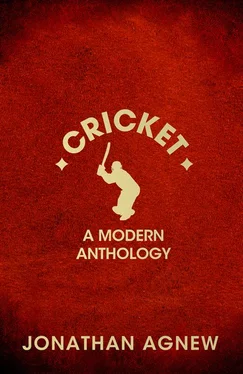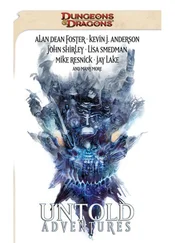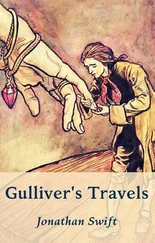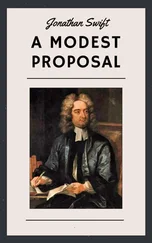One hundred years later there was a mutiny among the sepoys – the Indian members of the British East India Company’s army – that quickly spread to most of Northern India, and became known as the Indian Rebellion. The British held out under siege for six months in the city of Lucknow, where more than three thousand men, women and children gathered in the Regency Compound; only one thousand survived. Fifty miles down the road, hundreds more lost their lives in the Siege of Cawnpore (now Kanpur) and the subsequent Bibighar Massacre after an offer of safe passage was reneged upon. I have visited the beautifully maintained Kanpur Memorial Church (originally called All Souls Cathedral), with its many monuments and graves for the British who died there, and recall seeing many headstones bearing the inscription ‘murdered by mutineers’.
The uprising, which has also been described as India’s First War of Independence, was finally put down in Gwalior the following year, but the rebellion led directly to the dissolution of the East India Company. Back home in London, it was decided that British rule of India had to become much more strictly administered and controlled. The army was reorganized, and the financial system restructured. In 1858, British Crown rule – the British Raj – was established and would last until 1947.
The earliest record of cricket being played anywhere on the subcontinent is of a game played by British sailors in Cambay, near Baroda, in 1721. There is some uncertainty about the precise formation of the Calcutta Cricket and Football Club, but it was certainly in existence in 1792. Following the definitive battle between the British and Tipu Sultan, the Ruler of Mysore, which strengthened the British grip on southern India, another cricket club was founded at Seringapatam in 1799. The spread of cricket throughout the subcontinent had begun.
In those early days, the locals clearly only made up the numbers and there was the feeling that if you played cricket alongside the British, you might receive favourable treatment from them. But as their fascination for cricket developed rapidly, the Indian players also became rather good at it, and were more than capable of holding their own. A game between Madras and Calcutta in 1864 lays claim to being the first first-class match played on the subcontinent, but the most significant development was the founding of the Bombay Presidency Match in 1877, between the European players of the Bombay Gymkhana and the Parsees of the Zoroastrian Cricket Club. This grand occasion was granted first-class status in 1892 and a mark of how Indian cricket had evolved so quickly was the victory that year by the local Parsees over the Europeans. In 1906, the Hindus of Bombay joined the now triangular tournament. In their ranks was the left-arm spinner, Palwankar Baloo, a man whose life story provides a fascinating insight into how the role of cricket was by now expanding in Indian society.
Baloo was born in 1876 into the Dalit population, which according to the Hindu caste system meant that he was one of the lowest of the low, an ‘untouchable’. His first job was tending the cricket pitch at a club run by the Parsees in Poona (Pune), where he also bowled occasionally to the members. At the age of 17 he moved to the predominantly European Pune Cricket Club, where he earned four rupees a month rolling the pitch and preparing the practice facilities. Again, he bowled to the members and, encouraged by the captain, J. G. Greig, quickly developed into a fine spinner. However, because of his background, Baloo was never allowed to bat.
When a Hindu club challenged the Europeans to a match, and with Baloo clearly good enough for selection, his lowly status led to several members of the Hindu team refusing to play alongside him. But a compromise was reached. On the field, Baloo was treated as an equal to every other cricketer in the match. However, during the intervals, he was segregated to the extent that while lunch was taken inside the pavilion, Baloo had to sit outside and eat alone.
As time passed, and Baloo’s reputation grew, he was permitted to congregate with his team-mates off the field as well as on it, and when an outbreak of the plague encouraged Baloo to move to Bombay in 1896, he played for the Army. Despite further protests from members of the higher castes, Baloo also represented the Hindu Gymkhana Club and played in the famous Presidency matches of 1906 and 1907 between the Europeans and the Hindus, which were comfortably won by the Hindus by 109 runs and 238 runs respectively. These were highly significant victories not merely in cricketing terms, but particularly in the wider political sense, being portrayed in many quarters as a victory for the locals against the colonialists.
Baloo toured England in 1911 and was the outstanding player, taking 114 wickets at an average of 19 each, on what was otherwise an unsuccessful trip for the Indians. Despite regularly playing in what became (in 1912, through the addition of the Muslims) the Bombay Quadrangular tournament between 1912 and 1919, he was never allowed to become captain of the Hindu team, despite mounting pressure for him to do so. He attained the status of vice-captain in 1920 and, in a sign of the times (Mahatma Gandhi’s freedom campaign was beginning to gather pace), the captain of the Hindu Gymkhana, M. D. Pai, who, being a Brahmin, was a member of the highest caste, deliberately left the field on frequent occasions, enabling Baloo to lead the team in his absence. This was surely the first time a lowly Dalit was able to command those above his station.
As a footnote, Baloo became politically active in later life, twice losing elections as he continued his personal fight against the segregation of the Indian classes. Although he had become a comparatively influential figure, it is as the very first in India’s proud tradition of beguiling spin bowlers that Palwankar Baloo is best remembered.
Kumar Shri Ranjitsinhji enjoyed as different a background from Baloo as it is possible to imagine. An Indian prince who was educated at Cambridge University, Ranji overcame racial taboo to play fifteen Tests for England between 1896 and 1902 before India was admitted to international cricket. He scored 62 and 154 not out on his début against Australia, and he became synonymous with a new range of back-foot, wristy strokes such as the late cut and leg glance. This innovation combined with great flair earned him recognition among the very best batsmen there have ever been. In 1904 he returned to India to reclaim his seat as the Maharaja Jam Sahib of Nawanagar and died there in 1933, the year after India was granted Test status.
It is easy to imagine how a young child reading the history books in a school in any of the countries that were colonized could develop a deep-seated resentment of the British. At the very least, it would be very easy for a skilled orator or motivator to press the right nationalistic buttons and, in the cricketing context, produce a team that desperately wants to put one over its former colonial masters. But there is more to this in that local rivalries and tensions have also been created by colonialism and are played out on cricket fields around the world. This is especially the case whenever India meets Pakistan – fanatical spectators have been known to commit suicide following their team’s defeat. And there is nothing that New Zealanders enjoy more than their all-too-rare successes over Australia – although this has more to do with the relative size of the two countries than anything else. It might be argued that these historical rifts have given international cricket matches an extra edge, but it is an unfortunate way of achieving sporting competition. This helps to explain the deep-rooted rivalry that is still keenly felt today. The influence of the British Empire created local conflicts where none had previously existed, and while that has helped to establish the intense rivalry between India and Pakistan, for example, the strong sense of injustice that still lies only fractionally beneath the surface means that nothing motivates England’s opponents more than the desire to beat their old colonial master. It is no coincidence, therefore, that most of the really serious incidents in cricket’s history have involved England.
Читать дальше












